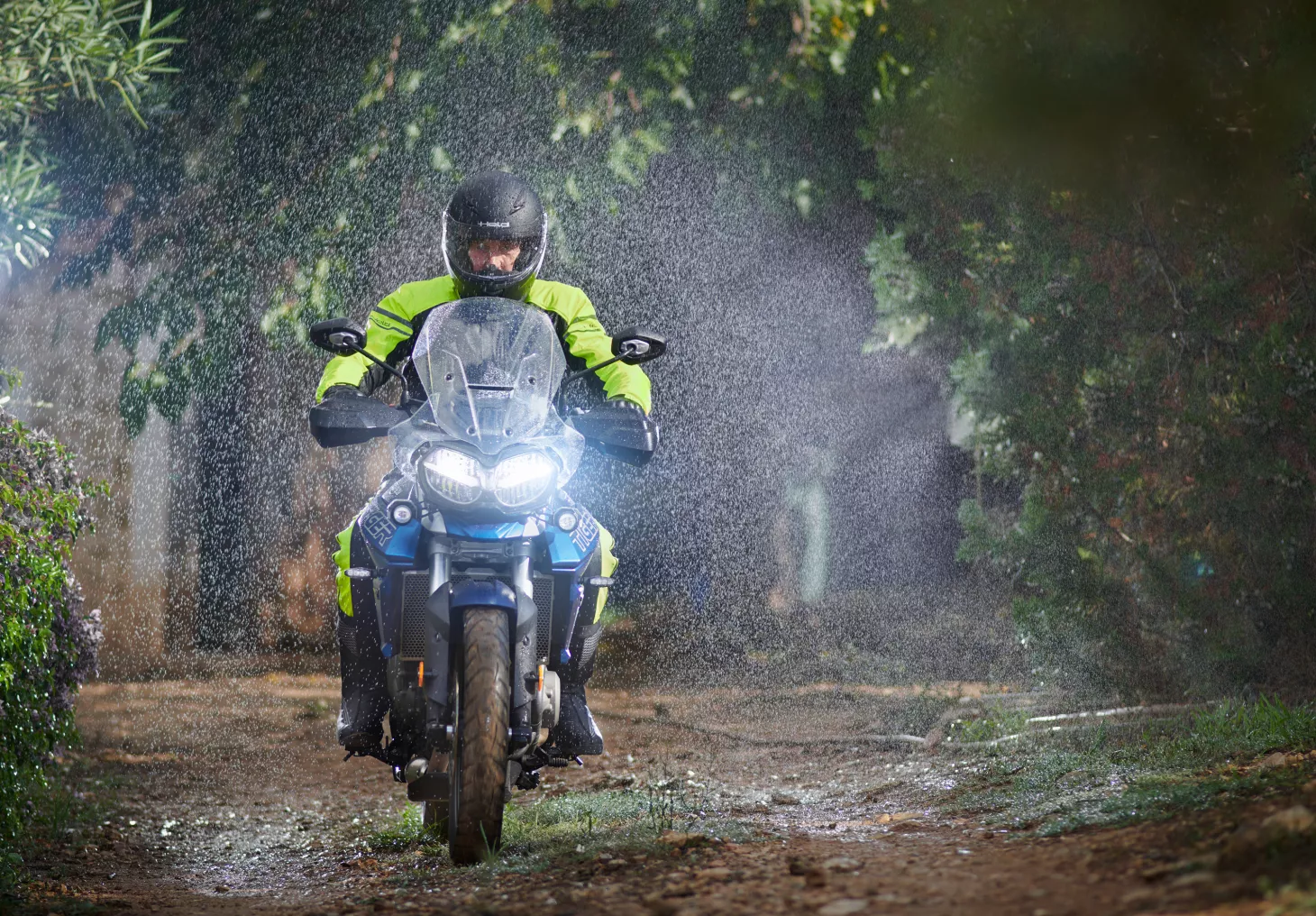Waterproofing - What exactly are the benefits?
How to waterproof correctly
Washing or spraying?
You are outdoors, on your motorbike or in the mountains. Suddenly it is getting dark and clouds are gathering, it is starting to rain. Now, at the latest, you are glad to have put on clothes that protect against rain. But how does it work that raindrops simply roll off functional textiles? The magic word is waterproofing! Generally, textiles such as outdoor clothing, softshell jackets, motorbike clothes, tent fabrics, sailing clothes, shoes and the like are waterproofed.
But what exactly does waterproofing do? Water impermeability and waterproofing are only loosely connected to each other. To make functional textiles impermeable to water, a special layer, the membrane, is integrated. A jacket that is completely wet on the outside, still doesn't allow that water to reach the skin. But when a functional jacket sticks to your skin wet all over (and maybe even in a cold wind), then this is not a particularly pleasant feeling. This is when waterproofing comes in. It ensures that water can't enter the upper layers of the material, but rolls off, keeping the fabric dry. This pearling effect also helps the water to slide off the fabric more quickly. In theory, this effect could also be achieved by waxing or oiling the garment. By the way, this is how "oilskins" were made in the past, which were worn in seafaring. The problem with this is that this type of waterproofing impairs the function of the membrane. It can no longer release moisture to the outside, thus it is no longer "breathable". The clothes then get wet from the inside. This is why it is important to apply the correct waterproofing method.

How do you waterproof correctly? To give you an example, let's have a look at the process carried out on a jacket: You need to wash the jacket before you can waterproof it. To do this, remove any objects from the pockets, but also any detachable protectors. These shouldn't be washed. Next, close all the zips (so that they don't rub against the fabric in the machine and damage it) and put the jacket in the washing machine and wash it with a suitable detergent. Then let it dry. If you use a dryer, please be sure to follow the instructions on the care label. Then it's time to use the waterproofing spray. Depending on the manufacturer, you may need to activate it by applying heat either with a hair dryer or in the dryer.
By the way, you can use waterproofing sprays on items of clothing with any cut. Spray evenly over the entire outer surface of the garment. Using a spray is particularly recommended for ski, rain and motorbike jackets, and clothing with insulating fillings. You can also use waterproofing spray to treat stressed areas in a targeted and particularly thorough way (e.g. if the straps of a backpack chafe).
What is wash-in waterproofing? Wash-in waterproofing is practical but should not be used on all membranes as breathability may be impaired. As the entire garment is soaked in the waterproofing agent, the inside is also treated, which means that in the case of non-porous polyurethane membranes, such as Dermizax, the transport of moisture from the inside to the outside is made more difficult. In the case of PTFE membranes (e.g. Gore-Tex), however, this does not affect moisture permeability, or rather the effect is so minimal that no difference is noticeable.
Having said that, our service professionals waterproof for our customers using spray.

Bottom line on waterproofing the rain jacket. Whether to use wash-in waterproofing or waterproofing spray depends on the material. There is no such thing as the "best" waterproofing method:
• For non-porous membranes (such as Dermizax) and lined hardshell jackets, we recommend the use of waterproofing spray, as this does not affect the functionality of the materials.
• For micro-porous membranes (such as Gore-Tex), on the other hand, you can use either method, i.e. wash-in waterproofing, or the spray bottle.
• In any case, always respect the instructions of the manufacturer. Each method has certain advantages and disadvantages. However, once you have done everything correctly, water will roll off smoothly and the air under your jacket will remain pleasant. So the next rain may come!
What to do if water leaks through the garment? If functional textiles let water pass through, waterproofing is of no use. Then the membrane is damaged. In this case, the item of clothing needs to be repaired. We will be happy to provide you with a repair quote. By the way: if you would like to leave it to professionals to have your textiles waterproofed, we will gladly take care of it for you. We will be pleased to make you an offer.
